The Truth about Tattoos

You don't have to look far in a crowd to see a tattoo today. Among people 18-29 years old, more than a third are inked. Tattoos were once a guy thing, but now, up to 65% of those with tats are women. Thinking of a tattoo for yourself? Find out about different types of tattoos, the health risks involved, and your options if you change your mind.
Safe Tattooing: Choosing a Studio
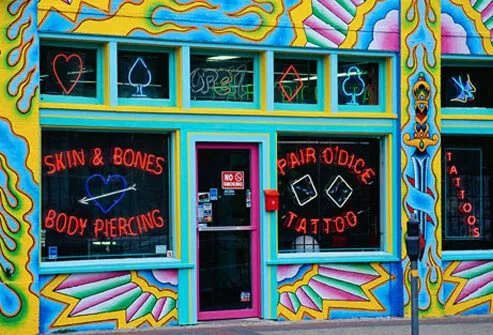
Getting a permanent tattoo requires breaking the skin and having contact with blood and body fluids. Above all, make sure the studio is as clean as a doctor's office. (Hint: Check the bathroom.) Make sure the artist's business license is up to date. Tattooing should be done in a separate area. It should have a clean, hard surface and no random items that add unwanted germs to the work area.
Safe Tattooing Tips

- Don't drink alcohol or take drugs the night before or while getting a tattoo. Don't even take aspirin. These can thin your blood and could cause you to bleed more.
- Don't get a tattoo if you're sick.
- Make sure all needles come from sterile, one-use packages.
- See that the studio has machines to kill the germs on the instruments after each use.
- Make sure the artist washes his or her hands and puts on sterile gloves. Many have to be trained in how to stop illnesses spread by blood.
- Be sure the work area is clean.
- Get details of everything used in your tattoo, including color (pigment), maker's name, and lot number.
- Closely follow all advice on healing. You may be told to use a germ-fighting ointment, for example.
Tattoo Risks: Infection
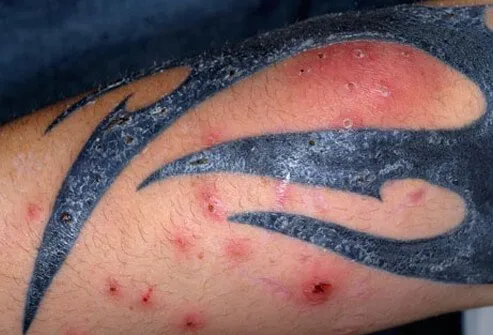
Any type of tattoo involves health risks. The worst is a very dangerous infection, like HIV or hepatitis C, from unclean needles. You could also get MRSA or impetigo, which are staph infections, or cellulitis, a deep skin infection. Another danger is impure ink that has mold or bacteria. This can lead to problems with the eyes, lungs, and other organs.
Tattoo Removal
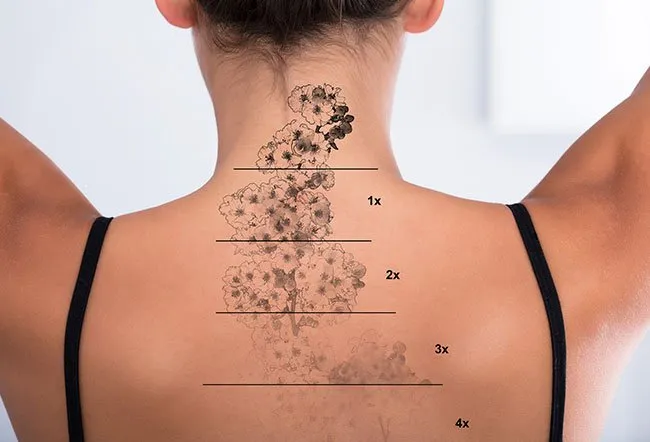
Think about it before you get a tattoo. You can get them removed, but it’s easier to get one than to have it taken off. And don’t expect your skin to look the way it did before you got inked. You’ll have the best results if your tattoo was done only with black ink.
Tattoo Removal Techniques
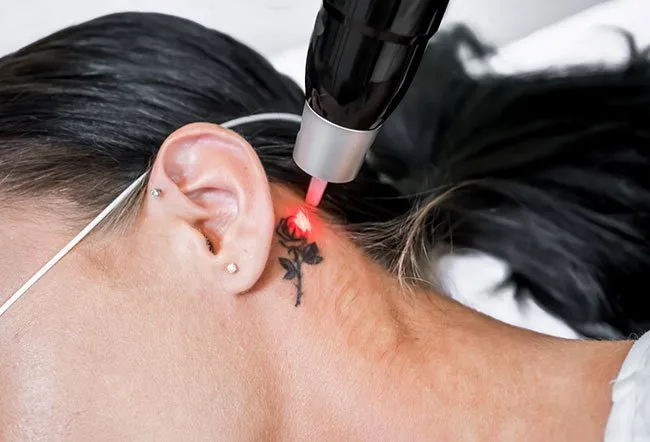
Remember that it is easier to get a tattoo than to remove it. Your skin will never be the same once it’s been inked. Colored inks are particularly hard to get rid of. You’ll have best removal results with black ink, but you can expect discoloration of scarring depending on your tattoo.
Tattoo Removal: What To Expect

This illustration depicts a high energy laser beam treating a focused area of a tatoo. Laser therapy is the most popular method for tattoo removal, but results do vary. Depending on the color of the ink in the tattoo, it may take several treatments, scarring may occur, and the tattoo may never totally fade.
Tattoo Removal Risks
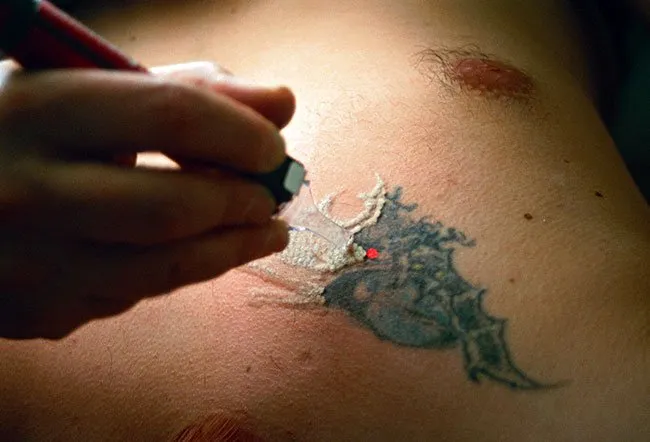
Lasers are the preferred method or removing a tattoo was removed but scarring is possible. Some color inks may require repeated visits and may never be 100% gone. If you’ve changed your mind about your tattoo, see a doctor, not a tattoo artist. NEVER use a do-it-yourself tattoo removal product because these products contain acids and can be dangerous to use.
Tattoo Removal Risks: Scarring
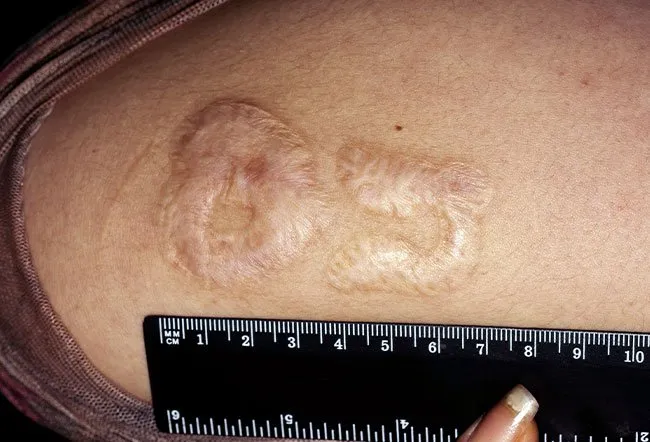
This raised scar is known as a hypertrophic scar and is the result of abnormal healing of a laser tattoo removal. Unlike a keloid scar, the connective tissue in the hypertrophic stays within the area of the original wound – in this case, within the lines of the tattoo.
Types: Temporary Tattoos

Short-term henna-based tattoos may seem like a good alternative to getting permanent ink, but they also come with risks. This image shows an allergic reaction to a henna tattoo on a young girl who had become hypersensitized after a previous exposure. Red-brown vegetable henna may be approved by the FDA only for hair color, but it is not for skin designs. Also avoid black or blue henna tattoos because that color may come from coal tar, which often causes severe allergic reactions.
Types: Amateur Tattoos

Anybody can jab ink, charcoal, or ashes under the skin with a pin. These home-made tats often aren’t as arty as those done by pros. Because such tattoos are often done under unclean conditions, they also have a much higher risk of infection.
Types: Cultural Tattoos

Different cultures have tattoo traditions. These tats may look a certain way or have a special purpose. They might be done for rituals or as a mark of beauty, for example.
Types: Professional Tattoos
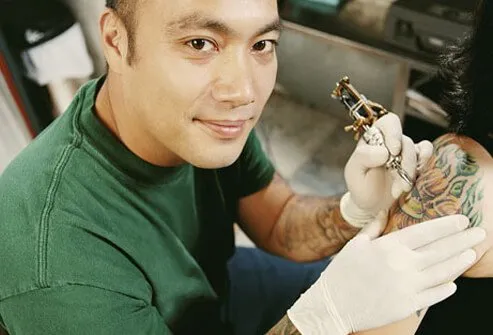
These tattoos are applied by registered artists using a tattoo machine. That's the term many artists prefer to "tattoo gun."
Types: Cosmetic Tattoos
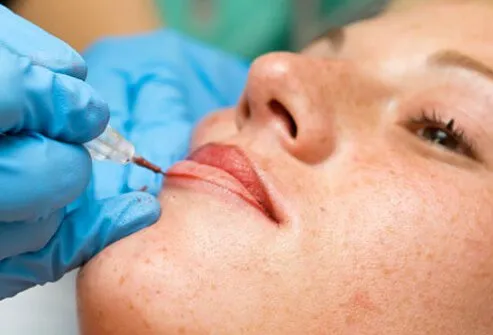
As well as lipstick and lip liner, tattoos can serve as "permanent" eyeliner, blush, eyebrow makeup, or even fake hair. Because tattoos fade over time, the inking has to be repeated to keep colors fresh.
Types: Medical Tattoos

Some people get inked for medical reasons. Someone with a chronic disease like diabetes may use a tattoo to alert health care workers in case of an emergency. If you're getting radiation therapy more than once, the doctors may use a tattoo to mark the site. After surgery to rebuild a breast, a tattoo may be used for the nipple.
Tattoo Pictures: The Scoop on Tattoo Safety, Removal, and More
This tool does not provide medical advice. See additional information: 
© 1996-2024 WebMD, LLC. All rights reserved.
Source slideshow on WebMD
